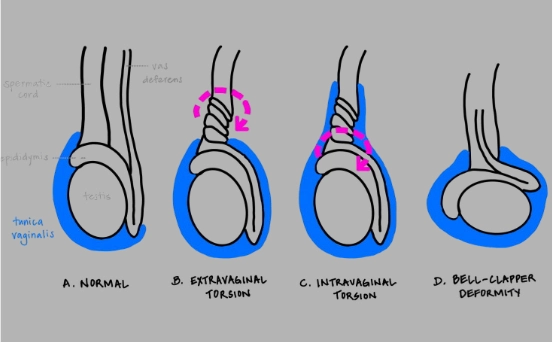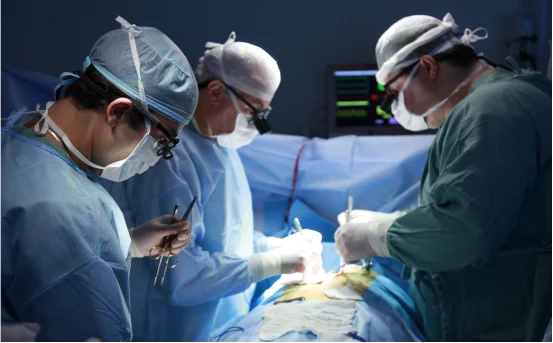Testicular health is an essential aspect of men’s overall well-being, yet it’s often overlooked or misunderstood. The testicles (or testes) are two oval-shaped organs located within the scrotum that play a vital role in male fertility and hormone production, particularly testosterone. Like any other organ in the body, the testicles are susceptible to a range of conditions some benign and others more serious.
However, testicular conditions are not as uncommon as many think. They can affect males of all ages from infants and adolescents to adults and older men. Some testicular issues, like cancer or torsion, require urgent medical attention, while others, such as hydroceles or spermatoceles, are benign but still need monitoring or treatment. Many of these conditions share similar symptoms like pain, swelling, or the presence of a lump making it essential to differentiate between them through proper diagnosis.
Types of Testicular
-
Testicular Torsion :- One of the most urgent testicular conditions is testicular torsion, a painful twisting of the spermatic cord that cuts off the blood supply to the testicle. This is a medical emergency that typically affects adolescent boys but can occur at any age.
Symptoms :-
-
Sudden, severe testicular pain
-
Swelling in the scrotum
-
Nausea or vomiting
-
Abdominal pain
If not treated within six hours, testicular torsion can lead to permanent damage or loss of the affected testicle. Immediate surgery is required to untwist the cord and restore blood flow.
-
-
Testicular Cancer :- Testicular cancer is one of the most common cancers in young men aged 15–35, although it is relatively rare compared to other cancers. Fortunately, it is also highly treatable, especially when detected early.
Types of Testicular Cancer :-
-
Seminomas slower growing and more sensitive to radiation.
-
Non seminomas faster growing and may require aggressive treatment.
Common Symptoms :-
-
A painless lump or swelling in the testicle
-
Feeling of heaviness in the scrotum
-
Dull ache in the abdomen or groin
Early diagnosis often involves a physical exam, ultrasound, and blood tests for tumor markers. Treatment usually includes surgery to remove the testicle, followed by radiation or chemotherapy depending on the stage.
-
-
Epididymitis :- Epididymitis is an inflammation of the epididymis the coiled tube at the back of the testicle that stores sperm. This condition is usually caused by bacterial infections, including sexually transmitted infections (STIs) like chlamydia or gonorrhea.
Symptoms :-
-
Pain and swelling in the testicle
-
Redness and warmth in the scrotum
-
Pain during urination or ejaculation
-
Fever
Epididymitis is typically treated with antibiotics and rest. Prompt treatment is important to avoid complications such as chronic pain or infertility.
-
-
Hydrocele :- A hydrocele is a fluid-filled sac that develops around the testicle, leading to swelling in the scrotum. It is common in newborns but can also occur in adults due to injury or inflammation.
Hydroceles are usually painless and harmless, but large ones can cause discomfort. In infants, the condition often resolves on its own. In adults, surgery may be required if the hydrocele persists or causes symptoms.
-
Varicocele :- A varicocele refers to the enlargement of the veins within the scrotum, similar to varicose veins in the legs. It commonly affects the left testicle and may lead to decreased sperm production and quality.
Signs to Watch :-
-
A lump in the scrotum
-
Dull, aching pain
-
Noticeable enlargement of the veins (like a “bag of worms”)
While many varicoceles are asymptomatic and don’t require treatment, those causing pain or fertility issues may need surgical correction.
-
-
Orchitis :- Orchitis is inflammation of one or both testicles, often caused by viral or bacterial infections. It can occur alongside epididymitis (epididymo-orchitis) or independently.
Common Causes :-
-
Mumps virus (especially in adolescent boys and men)
-
Sexually transmitted infections
-
Urinary tract infections
Symptoms include swelling, pain, fever, and tenderness in the testicle. Treatment depends on the cause, with viral orchitis usually resolving on its own and bacterial cases requiring antibiotics.
-
-
Undescended Testicle (Cryptorchidism) :- Cryptorchidism is a condition where one or both testicles fail to move into the scrotum before birth. It is common in premature babies and can correct itself within a few months.
However, if the testicle doesn’t descend naturally, surgical intervention (orchiopexy) may be necessary. This condition increases the risk of infertility and testicular cancer if left untreated.
-
Spermatocele :- A spermatocele is a benign cyst that forms in the epididymis and contains fluid and sperm. These cysts are usually painless and do not affect fertility.
Most spermatoceles don’t require treatment unless they grow large or cause discomfort. In such cases, surgical removal may be considered.
-
Testicular Trauma :- Physical injury to the testicles can result from sports, accidents, or direct impact. Testicular trauma may lead to bruising, swelling, or even rupture in severe cases.
Mild trauma usually resolves with rest, ice, and pain relievers. However, significant injuries may require surgical intervention to preserve testicular function.
-
Microlithiasis :- Testicular microlithiasis is a condition in which tiny calcium deposits form inside the testicles. It is often discovered incidentally during a scrotal ultrasound.
Though it is not cancerous, some studies suggest a possible link to an increased risk of testicular cancer. Regular monitoring may be recommended depending on the patient’s age and other risk factors.
When to See a Doctor?
Men should perform regular testicular self exams to detect any unusual lumps, swelling, or changes in texture. It’s important to consult a doctor if you notice
-
A lump or swelling in one or both testicles
-
Persistent pain or discomfort
-
Sudden onset of severe testicular pain
-
Unexplained scrotal heaviness
-
Changes in testicle size or firmness
Early diagnosis can make a significant difference, especially in conditions like testicular cancer or torsion.
Conclusion
Understanding the various types of testicular conditions is essential for maintaining men’s reproductive and hormonal health. While many of these issues are treatable and not life-threatening, prompt medical evaluation is key to preventing complications.























